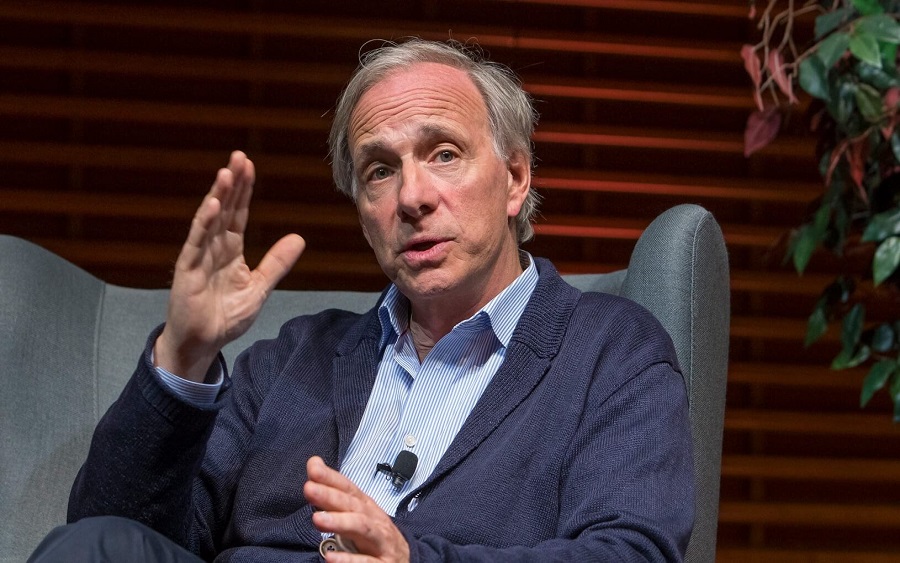- Starting to invest at a young age allows for the power of compounding to have a greater impact on wealth creation.
- In your 20s, it is advisable to establish and maintain four separate accounts for emergencies, investments, pensions, and high-risk investments.
- Retirement planning: As you approach your 50s and 60s, it becomes crucial to evaluate retirement goals and make necessary adjustments to savings and investment strategies.
Current stock market volatilities and talks of a possible global recession with ranging and severe trickle–down effects may be something that has you anxious enough about investing your hard-earned monies anywhere other than a savings account or, even perhaps safer still, invested underneath your pillows.
No risks, no foul, no potential for loss. Nice and safe, as it all should be.
However, cloistered as these investment portfolios may be at first glance, one thing is certain, you cannot create wealth, particularly generational, by investing money under your pillow.
Thus, and regardless of the many sombre economic news of late, creating wealth for yourself, and perhaps leaving a respectable sum behind for your loved ones when you are lowered to your place of final rest is one of the most important skills you must hone carefully no matter how young you may be, and more importantly, as you near your middle and retirement ages.
Sure, we can’t predict the future, no one can. But by thoughtful spending, saving, and investing throughout your lifespan, you can create financial peace and resiliency from whatever the world and markets throw at you.
And believe it or not, it has been proven time and again that, how you go about creating wealth for yourself and your family depends heavily, not on how much you make, but your age, and how much of what you earn is invested. So, here is a decade-by-decade guide to wealth creation:
Late Teens.
Hard to believe as it may seem, you do not have to wait until you are in your mid to late 20s to start creating wealth. Since money becomes more powerful as it compounds, it goes without saying that the earlier you begin investing, the easier it becomes, and the greater its effects.
Just imagine on the eve of your 16th birthday, investing as little as N1000, a week’s worth of pocket money for many modern-day teenagers, every month with no additional payments to an investment account, for as little as 8 years at a 13% average yearly return.
Rather than N96,000, a 24-year-old would be worth some N170,000, an additional N73,000 in passive growth during that life of the investment.
Chalk up an additional N165,000 in passive to that amount at her 30th birthday should she decide to make small additional N500 monthly contributions during the extra 6-year period and you have a potential millionaire, without even trying too hard, by just age 35, if she maintained the culture.
Of course, it is rather uncommon, and sometimes understandably so, to not find financially savvy kids at such an early, societally malleable, age.
But as parents, one lasting legacy we can leave them before the great beyond is a solid education in financial literacy. The sooner they start, the easier it will eventually become, for you, and ultimately, for them.
Investing early
20s.
Many have termed this stage in many young people’s lives as the ‘Make or Break’ years, and it can easily be understood why.
With so many societal pressures to act and look affluent, happy, and successful, spending as quickly as you earn, naïvely believing in the Groundhog Day effect as many ‘vicenarians’ want to, seems prevalent and has led many to never quite financially recover by the time they hit their 30s and the indelible comprehension of a wasted youth comes flooding in.
It is therefore important, paid employee or not, that 20s create and stick to what is termed ‘The 4-account strategy’.
Having 4 earmarked accounts, the first, being a high-yielding saving account intended for emergencies. The second is an investment account, particularly aimed at income and growth-generating equity portfolios, real estate, REITs, and the like.
The third is a pension account aimed at retirement, and lastly a fourth account, with less than 7.5% of your earnings geared towards high-risk/high-reward investments that could either make you a healthy payday or go belly up overnight.
Unless invested in high-yielding corporate treasury bills or bonds, government-issued debt instruments are particularly safe but especially low yielding and may thus not match the high-risk appetite ‘vicenarians’ might be known to have early on in life.
It is typically advisable to understand the workings of these vehicles but only invest if they are making up either the first or the last mentioned of the ‘4 account strategies’.
A fifth account, coined the ‘entertainment account’ may exist, after all, what makes our youth memorable are the seemingly unbridled fun times we have in them.
But a less than 5% stockpile from earnings into this account works just fine. Any more, and you could unwittingly be partying away your future.
30s.
Known by many as the ‘debt years’, these are the years when ‘Tricenarians’ begin settling into careers and acclimate to a regular income of some sort.
This acclimatization, unfortunately, leads to purchases of the big-ticket kind, particularly when there is a loan app or a payment plan readily available to cover the unpaid halves of your purchase at what is typically, and wittingly, sold to you as a small monthly fee.
Understanding the long-term effects of such a habit will help you avoid spending a chunk of your 30s paying off debt, or worse still, using debt to offset even more debt.
Thus, re-evaluating your ‘4 account strategy’, it might be time to start upping your savings and pension contributions to a point where you have at least a year’s worth of cash stowed away in your high-yielding account whilst matching, or even doubling,
your employer’s pension contribution or a 15–40% contribution increase should you be self-employed. It is also a great period to examine how well your high-risk/high-reward account has performed, and perhaps begin to scale back on how much is invested in it or how exposed you are to potential volatilities.
Having in-depth knowledge about financial numbers and how to analyze and pick safe investment bets in equities, bonds, real estate, and REITs should also be a priority at this age as, by the time you hit 40, you will most probably have to be making a lot more financial decisions based on number analysis than just feel good or fingertip feelings, regardless of whether you have a CPA or CFA you can call up or afford to speak to.
The 4-account strategy
40s.
Not all who hit 40, inept about financial planning and wealth building, remain ham-fisted forever, particularly if they acknowledge their past mistakes and seek active channels and skills to remedy them.
A glimmer of hope may remain particularly if you can overcome the much-dreaded midlife crisis syndrome and go about setting a S.M.A.R.T, yet somewhat aggressive, 20–25-year plan.
At this age, your earnings potential may probably begin to peak. Bones may even begin to creak every time you get out of bed or the long chair after a good movie and unless you have done a good job of investing and living within your means through your 20s, you might have to wake up to more bills than you could ever envision going into this age bracket. It is also time to seriously reflect on retirement and what you would like it to mirror.
Staying frugal is typically the best strategy at this age, at least, until the kids become adults of their own. A second or third skill, through a degree or certification, especially aimed at what you would love to do, post-retirement, might be a good next step.
At this stage, the high-risk/high-reward account just has to go, or at least be scaled to less than 2.5% of net–worth.
And unless you are issuing shares of your own to the general public, this is a good time to reevaluate the equities, REITs, and such portfolios, and also begin to consider a slight scale back, perhaps while increasing safer bets as Bonds and CPs.
Life insurance policies and Trust funds should also be given premium considerations at this point.
And maybe you begin to dust up that business plan and add flesh to the bare bones if you do not have a side business already. You may not remain an employee for too many years hence.
Retirement planning
50s.
Retirement is but a short decade away and at this age, you are either looking good for it or you may probably have one last dice to throw.
If lucky, you may just hit the proverbial jackpot, which rarely ever happens for most. Or spend the next few years worrying about finances until you finally give in.
A rule of thumb at this age is to give your pension administrator a call and have a nice lengthy conversation about how much extra monthly contributions you might need to make to hit a roundish retirement figure, or what other options may be available should an increase seem impracticable.
Being optimistic is good, but being realistic, bordering shy of pessimistic is even better, as the next best steps for a comfortable retirement, if you aren’t already looking good, will be a bitter but certainly a relieving pill to swallow if you stay humble and get work about caving a workable 15year solution.
With that said, perhaps don’t entirely close the high-risk/high-reward account quite yet. However, maintaining it at just under 1.5% of net–worth will be the best call.
At this age, the extra skills/certifications should also begin to kick in, to at least keep you still earning, active, and optimistic about your senior years.
Volatility is typically not good for an ageing heart at this point, thus reviewing expenses and scaling back a bit more, but not entirely, on capricious investments, unless they are with an adept eye to a larger endgame is well advised.
Greater investments in fixed yield portfolios will certainly keep heart rates and blood pressures tamed, and your need to see a physician ever so often to the occasional planned visits.
60s.
Retirement is here! Or at least, you can postpone it another 5years maybe, if you are lucky. If you haven’t previously drawn up a will, there’s no better time than your 60th birthday.
However, if you have, after the ‘sexagenarian’ party candles have been blown out, it is time to have a proper sit down with your attorneys and draft a distribution, or re-distribution strategy that will attract as much tax leniency as possible.
Just for some fun, you may maintain the high-risk/high-reward account, but keeping to 1% of net worth, and ring-fencing it through a vetted Trusteeship will be your best bet.
Of course, if you aren’t sitting on the board of a listed company then it is time to scale back on the growth stocks unless they are intended for the kids and the generations after, and simply go for high-income paying stocks to reallocate your assets to.
Liquidity is an absolute essential at this stage in life thus passive income, passive income, and even more passive income should be the name of the game through Bonds, CPs, dividends, rent, and royalties at this stage.
Keep it simple as possible and stay as liquid as possible, without breaking the bank of course. Travelling the world may be fun at this age but it certainly isn’t cheap either, even when you own a private jet. However, you deserve it, so enjoy!
Brain Essien is a certified financial analyst and business consultant, with expertise in digital/content marketing business plan/proposal formulation/design, pitch decks and capital raises. mcbrainandcompany@gmail.com. +234-703-444-6041



















